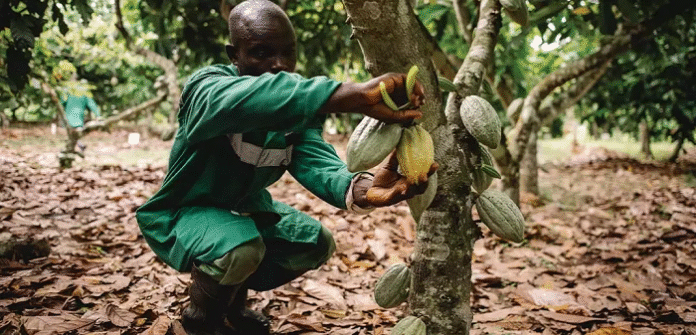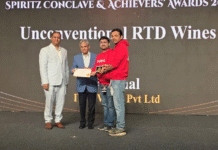
Nestlé has developed a novel patented technique that utilizes up to 30% more cocoa fruit to produce chocolate while maintaining a great taste. This approach not only minimizes waste but also helps farmers get more yield as well as value from their cocoa harvests.
Traditionally, chocolate is made using only the cocoa beans that are extracted from inside the cocoa pod. The beans are harvested, fermented, dried, roasted, and then ground into a liquor, which is used to make chocolate. However, a significant amount of cocoa fruit, including the pulp, placenta, and pod husk, remains largely unused.
Recognizing the untapped potential of these underutilized parts of the cocoa fruit, Nestlé’s R&D experts developed a patented technique that leverages all parts of the fruit inside the cocoa pod. In this novel, simplified method, everything inside the pod is collected as a wet mass, which ferments naturally, unlocking the key chocolate flavor. The mass is then ground, roasted and dried into chocolate flakes which can be used to make chocolate without compromising the taste.
Louise Barrett, head of the Nestlé Research and Development Center for Confectionery in York, UK, says, “With climate change increasingly affecting cocoa yields around the world, we are exploring innovative solutions that could help cocoa farmers maximize the potential of their harvests. This groundbreaking technique utilizes more of the fruit, while enabling us to provide delicious chocolate to our consumers. While this project is still at a pilot stage, we are currently exploring how to apply this innovation at a larger scale.”
The innovative technique has the potential to increase the amount of cocoa material available to farmers, and also to free up valuable time for them. With more efficient cocoa extraction, farmers could have more time to focus on good agricultural practices such as pruning, which has been demonstrated to improve yields.
IndiFoodBev — authentic, impactful and influential
An English-language food and beverage processing and packaging industry B2B platform in print and web, IndiFoodBev is in its third year of publication. It is said that the Indian food and beverage industries represent approximately US$ 900 billion in revenues which implies more than 20% of the country’s GDP. Eliminating the wastage on the farmside can help to deliver more protein to a higher number of the population apart from generating sizable exports. The savings in soil, seeds, water, fertilizer, energy and ultimately food and nutrition could be the most immense contribution that country is poised to make to the moderation of climate change.
To improve your marketing and grow sales to the food and beverage processing and packaging industry, talk to us. Our research and consulting company IppStar [www.ippstar.org] can assess your potential and addressable markets in light of the competition. We can discuss marketing, communication, and sales strategies for market entry and growth.
Suppliers and service providers with a strategy and budget for targeted marketing can discuss using our hybrid print, web, video, and social media channels to create brand recognition linked to market relevance. Our technical writers are ready to meet you and your customers for content.
The second largest producer of fruit and vegetables in the world is continuously expanding processing capacities and delivery systems with appropriate innovative technologies. We cover product and consumer trends, nutrition, processing, research, equipment and packaging from farm to thali. Get our 2025 media kit and recalibrate your role in this dynamic market. Enhance your visibility and relevance to existing markets and turn potential customers into conversations. Ask for a sample copy of our bi-monthly in print or our weekly IndiFoodBev eZine each Wednesday.
For editorial info@ippgroup.in — for advertisement ads1@ippgroup.in and for subscriptions subscription@ippgroup.in
Naresh Khanna – 10 February 2025
Subscribe Now











